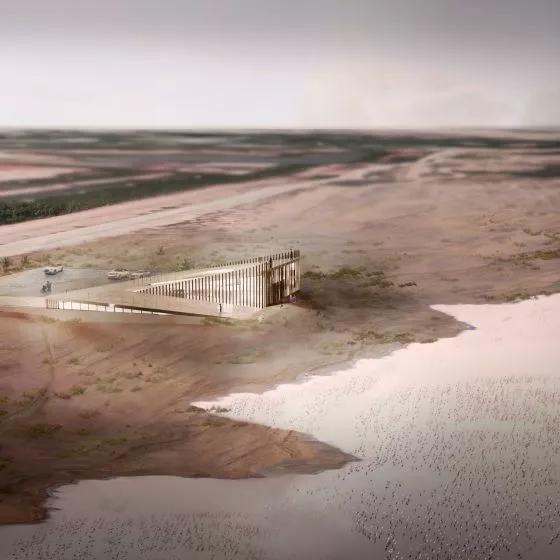Adriana Sowa, a graduate of the Faculty of Architecture at the Wrocław University of Technology, has created a design for a herbarium in Wrocław, which could be built in the New Żerniki housing development. Her work was nominated in the Young Talent Architecture Award 2020 competition, and was also in the finals of this year's Zbyszek Zawistowski "Diploma of the Year" Award.
The project entitled. "see: Herbarium in Wroclaw" is a diploma thesis carried out under the direction of Dr. Tomasz Glowacki. Adriana Sowa, on the example of Wroclaw's New Żerniki housing estate, observed the process of urbanization of wilderness, displacing animals and plants from their natural habitats. Meadows and fields there are being replaced by buildings as well as lawns and small trees, barely surviving in a warming climate.
project presentation in the YTAA 2020 competition
© Adriana Sowa
In the architect's words:
We design homogeneous, mono-species spaces with a disregard for the inherent values. Urban greenery is attractive only when it is under full control, enslaved, safe. Any wasteland, weeds are an aberration, they deviate from the definition of a well-groomed space. In nature, accompanying urban daily life, we have begun to see an intruder, or have become completely blind to it. [...] As we move away from nature, it appears as an increasingly valuable value. In the quest to experience it, the invisible is the one right next door. The inability to see makes us lose a part of nature when we create a definition of it.
urban plants
progressive procses of urbanization
© Adriana Sowa
Taking up the theme of the project, the author analyzed the flora of the Wroclaw housing estate, which remained on the still undeveloped plots. She created a herbarium from the plants found there, focusing on those species that have medicinal properties. The collection has grown to dozens of species, which are just a fraction of the richness of the surrounding meadows. These plants became the main building blocks of the project, and in order to avoid superficial perception, they were presented in black and white, which, according to Adriana Sowa, forces a suspension of the eye, an analysis of form and structure. It enhances "seeing" and conscious, strained observation.
The meadow as a living herbarium
all plants in the herbarium are depicted in black and white
© Adriana Sowa
To emphasize the presence of nature and enhance its perception, the author created an architectural premise. The site is divided into three parts, serving different functions: a meadow allowing the experience of nature, the cultivation of local medicinal plants in a dedicated facility in the form of a ring, and a tea room pavilion. The project could be built at the intersection of the main greenery axis of the New Żerniki estate, starting at the community center and leading through recreation areas up to the currently undeveloped plot. Its body would be broken into a ground floor, opening up a view of the possible continuation of the estate, and a closed ring floor, closing the axis urbanistically and zoning the space.
The site is divided into three parts: a meadow, a ring of crops and a tea house pavilion
© Adriana Sowa
Theheart of the project - the meadow, is formed by the plants that are found and those that will spontaneously appear on it. It is the main educational and cognitive element. It allows observation of plants in their natural environment and rhythm. Despite the initially defined limits of greenery, it, not architecture, takes precedence here. The premise of this space is the constant evolution, proliferation and constant change of the area, in accordance with the processes and cycles of nature. In the midst of the wild vegetation, a grid has been delineated, with the only controllable areas at the nodal points. These are zones provided for the growth of specific plant species. This grid is a repository, a catalog of medicinal plants, hidden in the midst of the meadow.
Read about areoponic crops and tea gardens on the next page.



















































